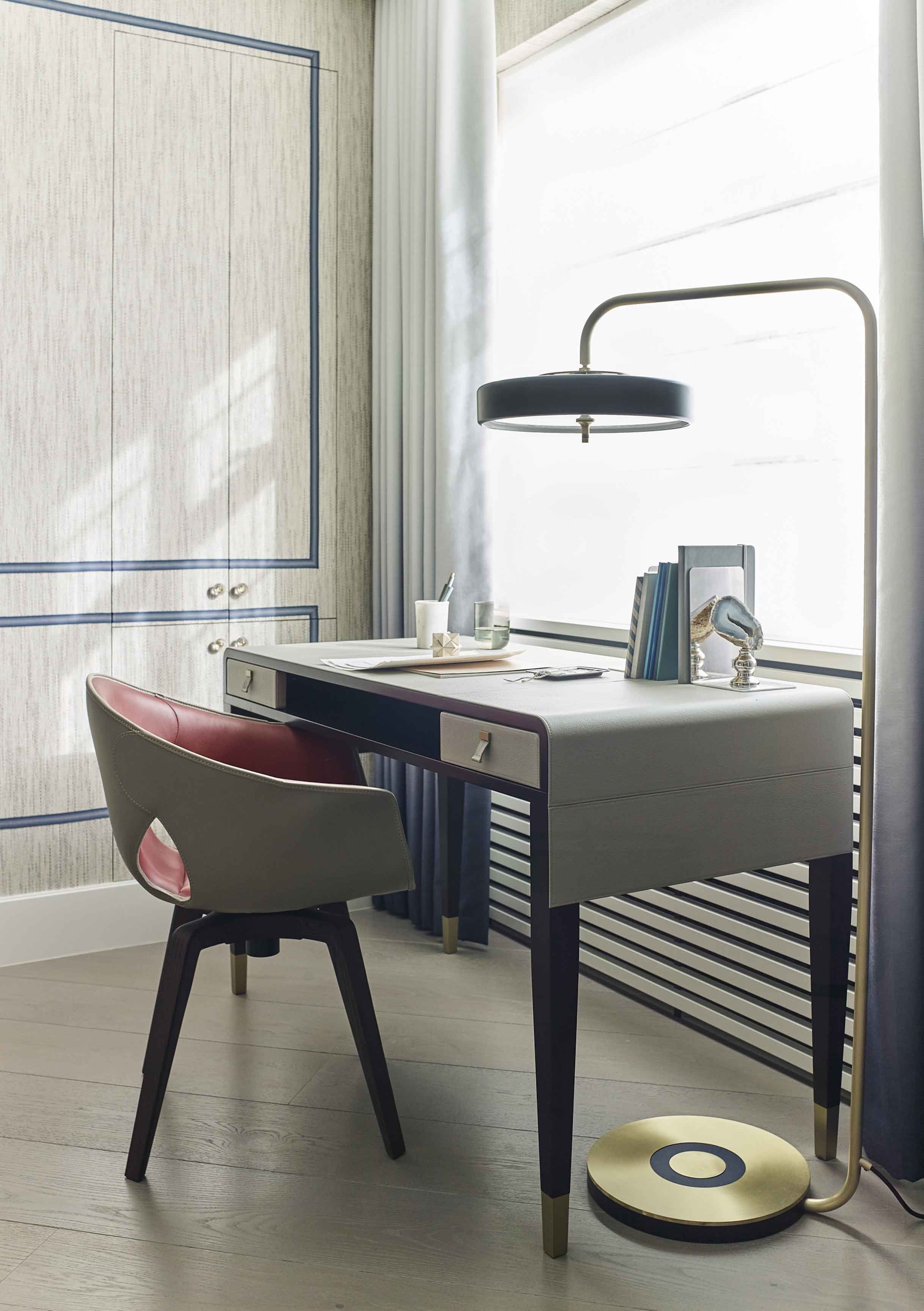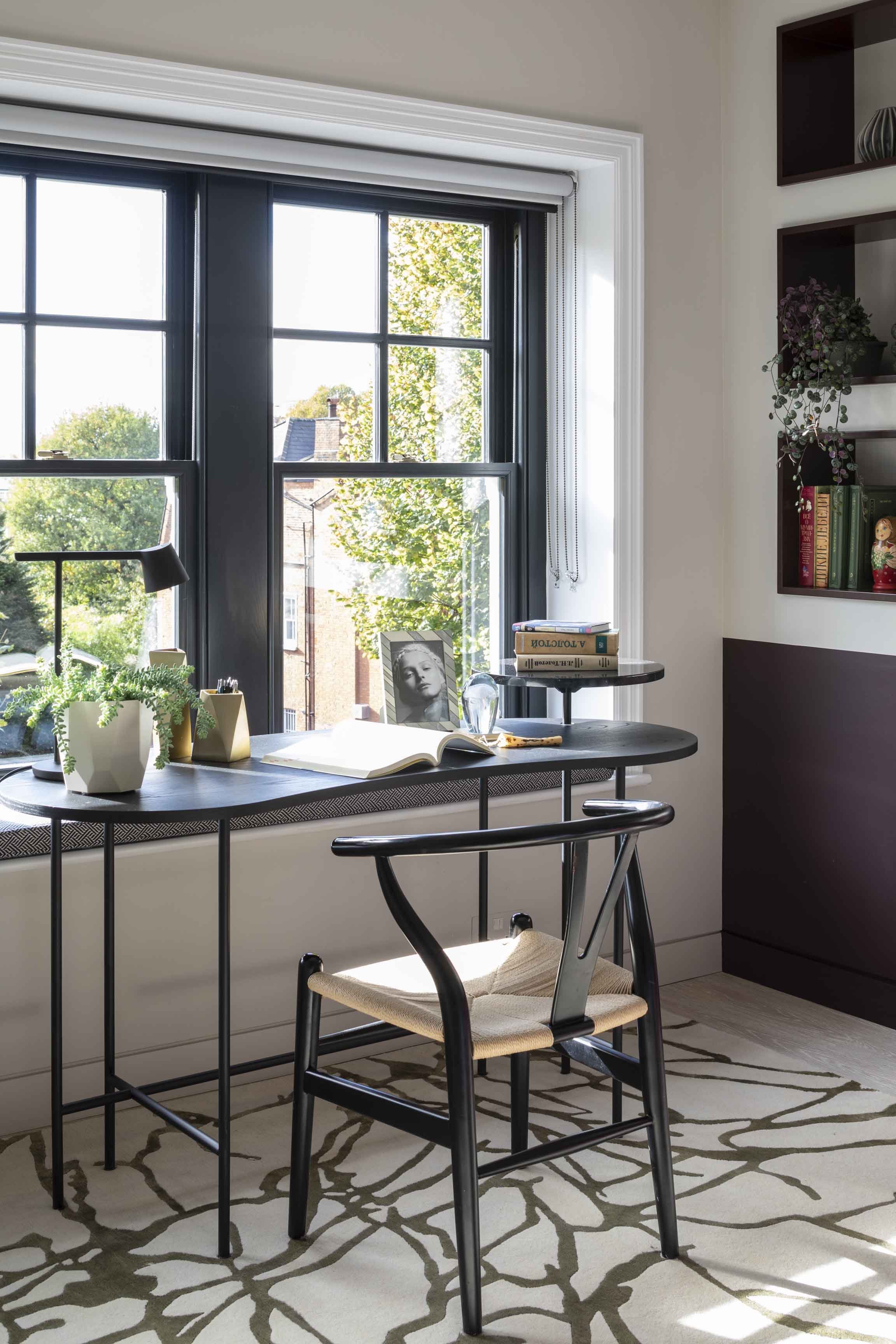Gunter & Co on creating the perfect space to work from home
As many of us continue to work from home, whether full or part time, the positive impact of an organised office on productivity has never been clearer. Designing a space where you can do your best work is simple once you have done some planning: you need to be mindful of the essentials while considering the space available. Most home offices tend to be on the small side and, without a plan, your work space can start to encroach upon the rest of your home or feel cramped.
Read on for Irene’s top tips to creating a productive home working environment.
Choose bespoke storage
Keeping clutter at bay is the secret to making a small home office look and feel bigger – as well as being easier to use. My number one tip for managing clutter is to opt for bespoke cabinetry that can be tailored to the dimensions of your space. If space in at a premium, take cabinetry to the ceiling so that you have more storage room.
Going bespoke also means that the internal layout can be adapted to what you want to store. We work with some incredibly skilled carpenters who create storage that is super-practical but also a thing of beauty, personalised to our clients’ styles and the way they organise their lives.
Focus on the practicalities
I love a desk with a docking drawer so that I can charge my laptop, tablet and phone overnight. Also, make sure you factor in dedicated desk lighting – preferably an adjustable or articulated lamp so that you can focus the light where you need it most. And it’s important to choose a comfortable desk chair that offers excellent back support. This is particularly important if you will be sitting for long periods of time.
There’s nothing more frustrating than slow Wi-Fi, so you’ll want to make sure you have a good connection. This may mean buying a booster or upgrading your router altogether.
Bring the outside in
If you can, position your desk in front of a window so that you have an inspiring view while you work. If the layout of your home doesn’t allow for this, the next best thing is to incorporate large house plants into your floorplan together with small potted indoor plants on desktops, windowsills and shelving units. This is a quick and simple fix that will have a positive impact on your physical and mental well-being. If your desk faces a wall, don’t leave this blank. Instead, invest in inspiring pieces of art that will bring you joy when you look at them.
Style your space
Don’t forget to style your home office with objects that have meaning to you and that have happy memories attached to them. This will make your space feel more personal and can help motivate you when working. Think carefully about each object you want to include. If something sparks interest and excitement, place it in your working space for when you need to stimulate creativity. Likewise, if you need moments of calm in your work, choose items that invoke these for you. Keep pieces that will distract you for an area of your home that is work free.
Never underestimate the power of a pinboard in a home office. The perfect place to pin reminders and to-do lists, pinboards are also great for adding a personal touch with family photos, kids’ artwork or a reminder of what you are aiming for, from a career goal to a fitness milestone or a beautiful new kitchen!
Plan your backdrop
One thing that became apparent during the last few years is the need to create the right backdrop on video calls. Avoid overly personal items, as these can have an impact on your professional appearance, or anything too distracting. Also, be aware of excessive daylight or artificial light, which will create a glare. Often, a tasteful painting or low-reflection glass framed photograph is a neat solution rather than a huge wall of books that could reveal too much of your personal life.
Maximise natural light
Flooding your small home office with natural light will help to make it feel bigger, so keep your windows clean and cut back any trailing plants blocking your view. Also, clear windowsills of clutter and consider your window dressing carefully. If you like curtains, make sure you can pull them back during the day to maximise light. I often recommend Roman blinds as an alternative to curtains – they make the window look ‘dressed’ and are attractive even when not in use, creating a neat stack at the top of the window when raised.
If you are concerned about blocking the top portion of your window with a Roman blind, choose a roller blind instead. I always try to hide the cartridge (the cylinder around which the fabric is rolled) as it’s very ugly! One option is to hide the roll behind a pelmet – or a neat designer’s trick is reverse roll the blind so when it’s hung, the cartridge is hidden. Another solution is to create a recess in the ceiling and hide the roller blind in there. Be aware that this won’t work if you are retrofitting blinds.
Zone your home
If your home office is part of an open-plan space, try to separate it from where you relax. Having a distinct divide between the two will help you to compartmentalise in your mind too. In our Chelsea townhouse (right), we used Tom Faulkner’s fabulous Papillon screen to separate the living area from the home office while retaining a sense of flow. Screens have the added benefit of being easy to move, making it simple to switch up your layout when required.





